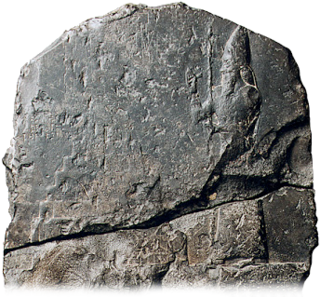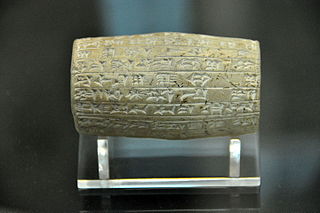| History of Lebanon |
|---|
 |
| Timeline |
The land of Phoenicia (roughly corresponding to modern Lebanon) was ruled by the Neo-Babylonian Empire from around 605 BC to 538 BC.
| History of Lebanon |
|---|
 |
| Timeline |
The land of Phoenicia (roughly corresponding to modern Lebanon) was ruled by the Neo-Babylonian Empire from around 605 BC to 538 BC.
Prior to the rise of the Babylonian Empire in the late 7th century BC, Phoenicia had been a well-sought after land in the eastern Mediterranean with Hittites [1] and then Assyrians [2] occupying the country in the 13th - 12th centuries and 10th - 7th centuries respectively. Following the collapse of the Assyrian Empire in Mesopotamia in 609 BC, Assyrian forces continued to resist their Babylonian conquerors in Upper Mesopotamia until 605 BC, when Babylon finally defeated the Assyrians at Carchemish, ending the last vestige of the Assyrian Empire. The conquest of Assyria by Nebuchadnezzar II, king of Babylon, put him at odds with the Egyptian Pharaoh, whose interests lay in keeping a friendly Assyrian state in control of parts of the Levant. Consequently, the Babylonians had to fight the Egyptians in order to take control of Phoenicia and the rest of the eastern Mediterranean coast. However, the Egyptians were unable to contain the Babylonian might, and the Egyptians soon withdrew back to their homeland. The Babylonians moved into the former Assyrian provinces on the eastern Mediterranean coast, and Phoenicia became part of the new Babylonian Empire. [3]

Nebuchadnezzar II, king of Babylon, ruled for around 43 years, from 605 BC to 562 BC. Nebuchadnezzar, like many other foreign rulers of Phoenicia before him, exploited Phoenicia's resources to enrich his empire. The economic benefits he gained included harvesting timber, which greatly financed his construction projects throughout Mesopotamia. [4]
The Phoenician city-states frequently rebelled against their Babylonian overlords, which resulted in almost yearly campaigns to repress the revolts. In 586 BC, fresh from the destruction of Jerusalem, Nebuchadnezzar and his army laid siege to Tyre, which had revolted. After an incredible 13 years of siege, the city finally capitulated. [5] [6]
Nebuchadnezzar's successors did him no credit and much of his gains were lost within a few decades. [4] The rise of the Persians to the east was ignored by Babylon's incompetent rulers. Even before Babylon fell, Persia conquered Syria and seized Phoenicia from Babylonian rule. In the battle of Sardis, a smaller Persian army succeeded (with the aid of camels and spearmen) in defeating an alliance of Lydian princes and Asian Greeks. [7] Since Nabonidus (King of Babylon from 556 BC) had sent troops to aid the Lydians and Greeks, the Persians then marched against Babylon and took the city in 539 BC, and the lands of the Babylonian Empire, including Phoenicia, passed into Persian hands.

Chaldea was a small country that existed between the late 10th or early 9th and mid-6th centuries BC, after which the country and its people were absorbed and assimilated into the indigenous population of Babylonia. Semitic-speaking, it was located in the marshy land of the far southeastern corner of Mesopotamia and briefly came to rule Babylon. The Hebrew Bible uses the term כשדים (Kaśdim) and this is translated as Chaldaeans in the Greek Old Testament, although there is some dispute as to whether Kasdim in fact means Chaldean or refers to the south Mesopotamian Kaldu.
The 6th century BC started on the first day of 600 BC and ended on the last day of 501 BC.

The 7th century BC began the first day of 700 BC and ended the last day of 601 BC.

Babylonia was an ancient Akkadian-speaking state and cultural area based in the city of Babylon in central-southern Mesopotamia. It emerged as an Akkadian populated but Amorite-ruled state c. 1894 BC. During the reign of Hammurabi and afterwards, Babylonia was retrospectively called "the country of Akkad", a deliberate archaism in reference to the previous glory of the Akkadian Empire. It was often involved in rivalry with the older ethno-linguistically related state of Assyria in the north of Mesopotamia and Elam to the east in Ancient Iran. Babylonia briefly became the major power in the region after Hammurabi created a short-lived empire, succeeding the earlier Akkadian Empire, Third Dynasty of Ur, and Old Assyrian Empire. The Babylonian Empire rapidly fell apart after the death of Hammurabi and reverted to a small kingdom centered around the city of Babylon.

Nebuchadnezzar II, also spelled Nebuchadrezzar II, was the second king of the Neo-Babylonian Empire, ruling from the death of his father Nabopolassar in 605 BC to his own death in 562 BC. Historically known as Nebuchadnezzar the Great, he is typically regarded as the empire's greatest king. Nebuchadnezzar remains famous for his military campaigns in the Levant, for his construction projects in his capital, Babylon, including the Hanging Gardens of Babylon, and for the role he plays in Jewish history. Ruling for 43 years, Nebuchadnezzar was the longest-reigning king of the Babylonian dynasty. By the time of his death, he was among the most powerful rulers in the world.

Nabopolassar was the founder and first king of the Neo-Babylonian Empire, ruling from his coronation as king of Babylon in 626 BC to his death in 605 BC. Though initially only aimed at restoring and securing the independence of Babylonia, Nabopolassar's uprising against the Neo-Assyrian Empire, which had ruled Babylonia for more than a century, eventually led to the complete destruction of the Assyrian Empire and the rise of the Neo-Babylonian Empire in its place.

The Battle of Carchemish was fought around 605 BC between the armies of Egypt allied with the remnants of the army of the former Assyrian Empire against the armies of Babylonia, allied with the Medes, Persians, and Scythians. This was while Nebuchadnezzar was commander-in-chief and Nabopolassar was still king of Babylon. Nebuchadnezzar became king right after this battle.

The Battle of Thymbra was the decisive battle in the war between Croesus of the Lydian Kingdom and Cyrus the Great of the Achaemenid Empire. Cyrus, after he had pursued Croesus into Lydia after the drawn Battle of Pteria, met the remains of Croesus' partially-disbanded army in battle on the plain north of Sardis in December 547 BC. Croesus' army was about twice as large and had been reinforced with many new men, but Cyrus still utterly defeated it. That proved to be decisive, and after the 14-day Siege of Sardis, the city and possibly its king fell, and Lydia was conquered by the Persians.

This timeline tries to compile dates of important historical events that happened in or that led to the rise of the Middle East. The Middle East is the territory that comprises today's Egypt, the Persian Gulf states, Iran, Iraq, Israel and Palestine, Cyprus, Jordan, Lebanon, Oman, Saudi Arabia, Syria, Turkey, United Arab Emirates, and Yemen. The Middle East, with its particular characteristics, was not to emerge until the late second millennium AD. To refer to a concept similar to that of today's Middle East but earlier in time, the term ancient Near East is used.
The Battle of Nineveh is conventionally dated between 613 and 611 BC, with 612 BC being the most supported date. Rebelling against the Assyrians, an allied army which combined the forces of Medes and the Babylonians besieged Nineveh and sacked 750 hectares of what was, at that time, one of the greatest cities in the world. The fall of Nineveh led to the destruction of the Neo-Assyrian Empire over the next three years as the dominant state in the Ancient Near East. Archeological records show that the capital of the once mighty Assyrian Empire was extensively de-urbanized and depopulated in the decades and centuries following the battle. A garbled account of the fall of the city later led to the story of the legendary king Sardanapalus.

The Neo-Babylonian Empire or Second Babylonian Empire, historically known as the Chaldean Empire, was the last polity ruled by monarchs native to Mesopotamia. Beginning with the coronation of Nabopolassar as the King of Babylon in 626 BC and being firmly established through the fall of the Assyrian Empire in 612 BC, the Neo-Babylonian Empire was conquered by the Achaemenid Persian Empire in 539 BC, marking the collapse of the Chaldean dynasty less than a century after its founding.

The history of ancient Lebanon traces the course of events related to the geographic area in the Eastern Mediterranean of what is now known as Lebanon from the beginning of antiquity to the beginning of Arab rule.
Middle East empires have existed in the Middle East region at various periods between 3000 BCE and 1924 CE; they have been instrumental in the spreading of ideas, technology, and religions within Middle East territories and to outlying territories. Since the 7th century CE, all Middle East empires, with the exception of the Byzantine Empire, were Islamic and some of them claiming the titles of an Islamic caliphate. The last major empire based in the region was the Ottoman Empire.

During the Middle Assyrian Empire and the Neo-Assyrian Empire, Phoenicia, what is today known as Lebanon and coastal Syria, came under Assyrian rule on several occasions.

Athura, also called Assyria, was a geographical area within the Achaemenid Empire in Upper Mesopotamia from 539 to 330 BC as a military protectorate state. Although sometimes regarded as a satrapy, Achaemenid royal inscriptions list it as a dahyu, a concept generally interpreted as meaning either a group of people or both a country and its people, without any administrative implication.

The Neo-Assyrian Empire arose in the 10th century BC. Ashurnasirpal II is credited for utilizing sound strategy in his wars of conquest. While aiming to secure defensible frontiers, he would launch raids further inland against his opponents as a means of securing economic benefit, as he did when campaigning in the Levant. The result meant that the economic prosperity of the region would fuel the Assyrian war machine.
The Fall of Harran refers to the siege and capture of the Assyrian city of Harran by the Median and Neo-Babylonian empires.

Nebuchadnezzar III, alternatively spelled Nebuchadrezzar III and also known by his original name Nidintu-Bêl, was a rebel king of Babylon in late 522 BC who attempted to restore Babylonia as an independent kingdom and end the rule of the Persian Achaemenid Empire in Mesopotamia. A Babylonian noble of the Zazakku family and the son of a man by the name of Mukīn-zēri or Kîn-Zêr, Nidintu-Bêl took the regnal name Nebuchadnezzar upon his accession to the Babylonian throne and claimed to be a son of Nabonidus, Babylon's last independent king.

The timeline of ancient Assyria can be broken down into three main eras: the Old Assyrian period, Middle Assyrian Empire, and Neo-Assyrian Empire. Modern scholars typically also recognize an Early period preceding the Old Assyrian period and a post-imperial period succeeding the Neo-Assyrian period.
Georges Roux, Ancient Iraq